September 01, 2021
2515
In industrial automation, sensors play a vital role to make products intelligent and super-automated. Sensors help people to detect, analyze, measure and process various changes, such as changes in position, length, height, exterior, and misalignment that occur in industrial production sites.
A sensor is a device that can identify electrical or physical or other quantitative progress and deliver revenue by confirming the production progress. In short, industrial automation sensors are input devices that provide outputs (signals) related to specific physical quantities (inputs).
Sensors also play a pivotal role in predicting and preventing many potential processes, thereby satisfying the needs of many industrial sensing applications.
Are various sensors used in automation:
1. Pressure sensor
A pressure sensor is an instrument that can sense pressure and convert it into an electrical signal, the number of which depends on the pressure applied.
The main pressure sensors used in industrial automation include pressure sensors and vacuum sensors.
Pressure sensors: Pressure sensors are widely used in industrial and hydraulic systems, and these high-pressure industrial automation sensors are also used in climate control systems.
Vacuum sensor: When the vacuum pressure is lower than the atmospheric pressure, a vacuum sensor is used, and it is difficult to detect by mechanical methods. These sensors usually depend on heating wires whose resistance is temperature-dependent. When the vacuum pressure increases, the convection drops and the wire temperature rises. The resistance increases proportionally and is calibrated near the pressure in order to effectively measure the vacuum.
Application of pressure sensors: used to measure pressure below atmospheric pressure at a given location; used in meteorological instruments, airplanes, vehicles and other machinery that have achieved pressure functions; used in systems to measure other variables, such as fluid/gas flow, Speed, water level and altitude.
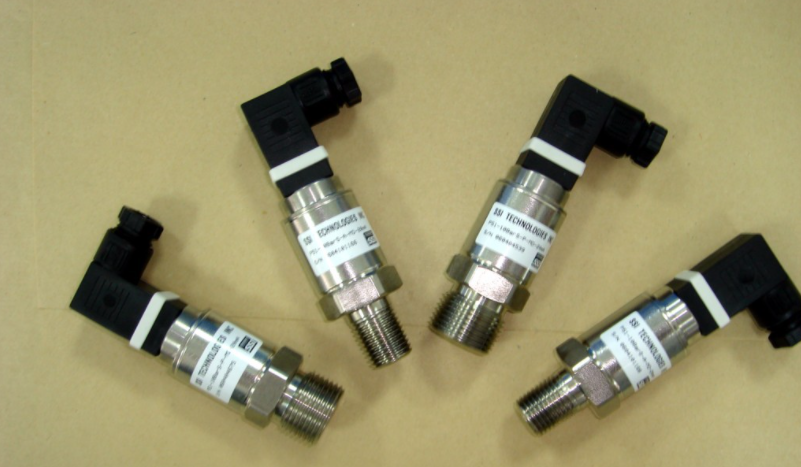
2. Temperature sensor
A temperature sensor is a device that collects information about temperature from resources and changes it into a form that other devices can understand. It is a common category of sensors that can detect temperature or heat, and can measure the temperature of the medium.
The main temperature sensors used in automation include digital temperature sensors and temperature and humidity sensors.
Digital temperature sensor: The digital temperature sensor is a silicon-based temperature sensing IC that can provide accurate output by digitally representing the measured temperature. This simplifies the design of the control system compared to methods involving external signal conditioning and analog-to-digital converters (ADC).
Temperature and humidity sensor: The temperature and humidity sensor combines a temperature sensor and a humidity sensor, and then attributed to the digital signal output of the measurement. By using this technology and temperature and limited digital signal acquisition and humidity sensing technology, a high degree of consistency and excellent long-term stability can be ensured.
Application of temperature sensor: continuous measurement of air, soil or water temperature; used for measurement in complex industrial applications; used for measurement under harsh working conditions.
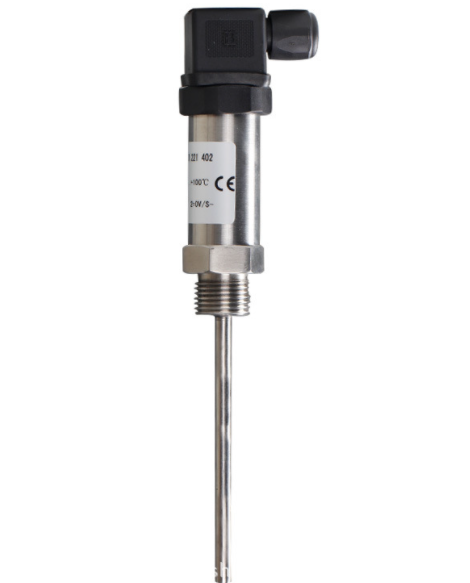
3. MEMS sensor (Micro Electro Mechanical System)
MEMS industrial automation sensors convert the measured mechanical signals into electrical signals.
Important sensors used in industrial automation are acceleration and motion MEMS.
Acceleration sensor: Microelectromechanical system (MEMS) acceleration sensor is one of the main inertial sensors. And it has dynamic sensor capabilities and a larger range of sensing capabilities.
Motion sensor: Micro-Electro-Mechanical System (MEMS) motion sensor uses data processing algorithms designed on a motion interactive platform, which integrates many low-cost MEMS motion sensors with ZigBee wireless technology, and can be personalized when working with machines Interactive. The sensor signal processing system mainly solves the problems of noise elimination, signal smoothing, gravity-affected partition, coordinate system change and position information restoration, and is widely used in ABS technology in the automotive industry.
Application of MEMS sensor:
MEMS sensors have a wide range of applications, from industry, entertainment, sports to education. For example, triggering the deployment of airbags or monitoring nuclear reactors. It is also used to measure static acceleration (gravity), tilt of objects, dynamic acceleration in airplanes, vibrations to objects in cars, and vibrations of mobile phones, washing machines or computers. There are also used to detect movement and so on.
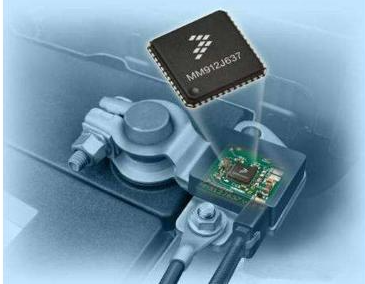
4. Torque sensor
The torque sensor has a basic mechanical stop to increase overload capacity and provide additional protection during installation and operation.
Important sensors used in industrial automation include rotational torque and torque sensors.
Rotation torque sensor: The rotation torque industrial automation sensor is used to measure the reaction force of the rotation torque. These torque meters are equipped with basic mechanical stops to increase the remaining capacity and provide additional safety during installation and operation.
Torque sensor: The torque sensor utilizes superior strain gauge technology to meet the most challenging requirements in static and dynamic applications of the sensor.
Application of torque sensor:
It is used to measure the rotation speed and the necessity of maintenance; it is used to measure the mass and mass moment of inertia; the amount of torque to be calculated from the perspective of the quasi-static process; it is used to measure the highest rotation speed and oscillating torque.
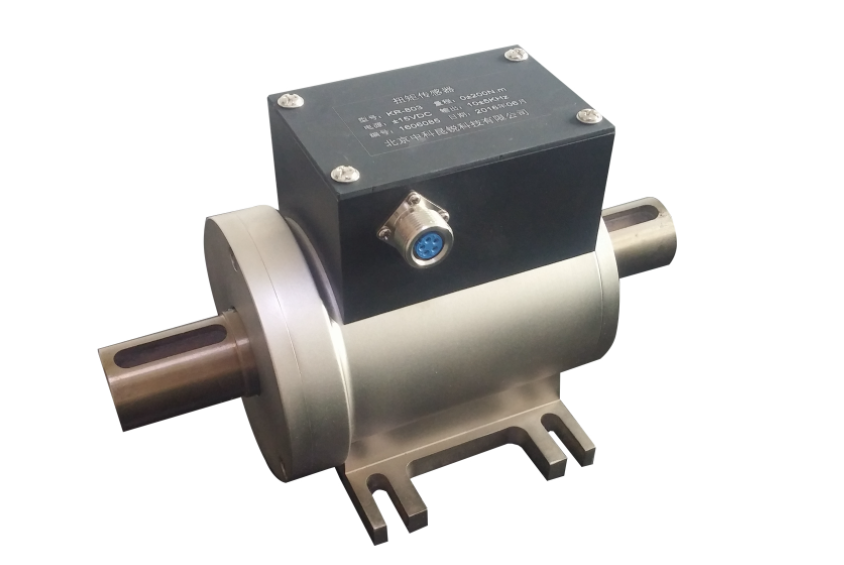
5. Magnetic switch
The magnetic switch is a special name for the cylinder sensor, which is mainly used to detect the position of the cylinder piston. Usually, it is provided by the cylinder supplier according to the customer's usage.
As the name implies, the magnetic switch detects the target through electromagnetic induction, so its detection accuracy is quite low.
The cylinder uses a magnetic switch, which can be used to increase the speed of the equipment. When the cylinder movement is completed, the magnetic switch senses it, and immediately proceed to the next step. A cylinder is generally equipped with two magnetic switches. Of course, there is also a case of a magnetic switch. For example, one action of the cylinder pushes an object and clamps the object. For this cylinder, it is important to push out the position. There must be a magnetic switch, but if you are not very concerned about whether the cylinder is retracted in place when it is retracted, as long as the cylinder is not in the ejected position, the cylinder only needs to be equipped with a magnetic switch.
Another area that needs special attention is that the cylinder is not necessarily equipped with a magnetic switch to detect the position. If the cylinder body is in a relatively narrow position and the magnetic switch is not easy to adjust, the sensing point needs to be led out, and the groove switch is used to sense the cylinder's position. action.
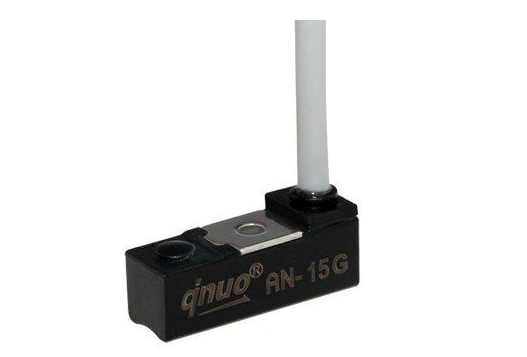
6. Proximity switch
The proximity switch is also designed and manufactured based on the principle of electromagnetic induction, so it can only be used to measure metal targets, and the sensing distance of different metals is slightly different. At present, the commonly used proximity switch detection distances are approximately as follows: 1mm, 2mm, 4mm, 8mm, 12mm, etc.
There are usually two types of proximity switches: buried type and non-buried type. The so-called buried type means that the sensor head of the proximity switch does not detect the metal target in the circumferential direction, but only detects the metal target in front of it, that is, the sensor head can not expose the metal mounting bracket; the so-called non-buried type refers to the proximity switch sensor head It not only detects the metal target in front of it, but also detects the metal target in the circumferential direction. That is, the sensor head must be exposed to the metal mounting bracket for a certain distance and there must be no metal targets within a certain range in the circumferential direction to avoid misjudgment.
The detection accuracy of proximity switches is higher than that of magnetic switches. Proximity switches are usually used to determine the presence or absence of products, whether the fixtures are in place, and other occasions that require relatively low position accuracy.
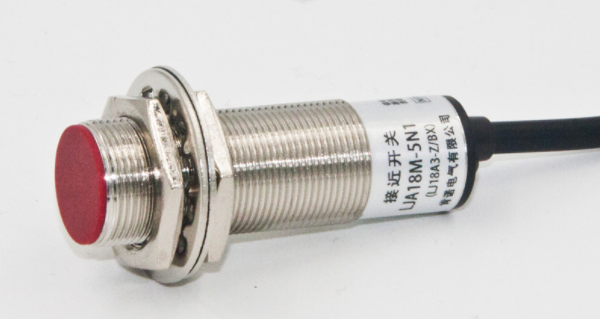
7. Photoelectric sensor
The photoelectric detection method has the advantages of high accuracy, fast response, non-contact, etc., and has many measurable parameters. The sensor has a simple structure and flexible forms. Therefore, the photoelectric sensor is widely used in detection and control. There are roughly three types of photoelectric switches that we usually call: one is a reflective photoelectric sensor, one is a through-beam photoelectric sensor, and the other is a photoelectric sensor that uses a reflective plate to reflect light.
Among them, the latter two are detected by shading the target object, and the former is the detection function by reflecting light from the target object. Therefore, usually the latter two detection distances are farther and the accuracy is higher. Because the photoelectric sensor has quite high detection accuracy, it is usually used to detect the precise position of workpieces such as products or manipulators and the feedback devices of stepping and servo systems.
Since U-type photoelectric is the most used in automation design, I will focus on it here. Different brands of U-shaped lights have different installation forms, which will not be discussed in detail here. The following figure shows a plug-in U-type photoelectric of a certain company. When choosing this type of U-type photoelectric, special attention should be paid to leaving enough space at the tail for the plug-in. Of course, when electrical components are often selected, Pay attention to this one. In addition, when designing a self-made short-stroke module, it is necessary to consider whether there is enough distance to set up 3 U-shaped optoelectronics within the stroke range. If the distance is not enough, U-shaped optoelectronics can be designed on both sides of the module.
Generally, a module will be equipped with 3 U-shaped photoelectrics, two of which are the extreme photoelectrics at the end of the two strokes of the module, and the middle one is the U-shaped photoelectric for the module to find the origin. The following mainly explains two ways to find the origin:
(1) The photoelectric switch senses the induction sheet, and the motor continues to move. An origin set by the program is found as the origin of the module within one rotation of the motor. This method has high positioning accuracy, and the main factors that affect the accuracy are the screw rod, the motor itself, and the coupling. Mainly affected by some parameters of the module itself, the positioning accuracy is high, which can reach 0.01mm;
(2) After the photoelectric switch senses the sensor, the motor starts to brake until the entire system stops as the origin of the module. The accuracy of this method will be affected by temperature, light conditions, and the response speed of the photoelectric switch, and the positioning accuracy is low. Generally, it is about 0.05-0.1mm.
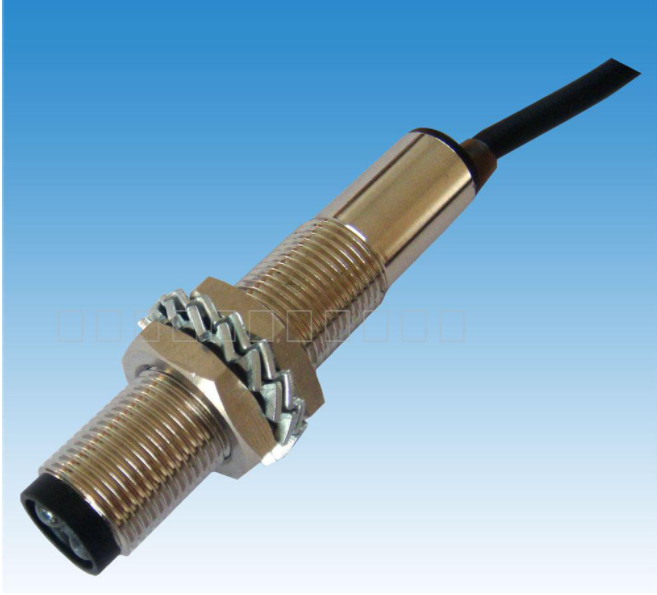
8. Optical fiber sensor
Fiber optic sensor is also a detection element that applies photoelectric signal conversion. Fiber optic sensors generally require fiber amplifiers to be used together, which is slightly more expensive. However, in terms of nature, it is essentially different from the aforementioned photoelectric and proximity sensors. It can perform qualitative measurements. How can I say? In other words, he can perform quantitative detection, such as how many millimeters the distance can be measured.
Compared with photoelectric switches, optical fiber sensors can usually detect smaller targets, longer detection distances, and higher accuracy. Therefore, optical fiber sensors are usually used in more precise detection occasions and positioning feedback devices of stepping and servo systems.
The working principle of the optical fiber sensor is to send the light beam incident from the light source to the modulator through the optical fiber, and interact with the external measured parameters in the modulator to make the optical properties of light such as light intensity, wavelength, frequency, phase, polarization state, etc. It changes and becomes a modulated optical signal, which is then sent to the optoelectronic device through an optical fiber, and the measured parameter is obtained after the demodulator. In the whole process, the light beam is introduced through the optical fiber, and then emitted after passing through the modulator. The function of the optical fiber is first to transmit the light beam, and secondly to act as an optical modulator.
The anti-collision problem of the optical fiber head should be considered when designing the optical fiber sensor, and the bracket to protect the optical fiber head is generally designed. In addition, the influence of the surrounding environment on both the through-beam photoelectric and through-beam fibers is smaller than that of ordinary reflective fibers, and needs to be considered during the design.
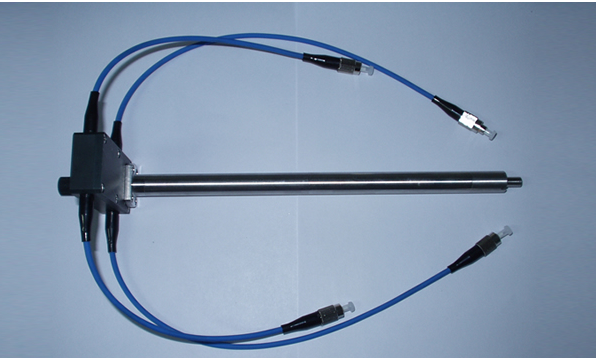
9. Displacement sensor
As the name implies, it is a sensor that detects changes in the position of the target.
Displacement sensor, also known as linear sensor, is a linear device belonging to metal induction. The function of the sensor is to convert various measured physical quantities into electricity.
In the production process, the measurement of displacement is generally divided into measuring the physical size and mechanical displacement. According to the different forms of the measured variable, the displacement sensor can be divided into two types: analog and digital.
The analog type can be divided into two types: physical property type and structural type. Commonly used displacement sensors are mostly analog structures, including potentiometer-type displacement sensors, inductive displacement sensors, self-aligning machines, capacitive displacement sensors, eddy current-type displacement sensors, Hall-type displacement sensors, etc.
An important advantage of the digital displacement sensor is that it is convenient to send the signal directly into the computer system. This kind of sensor is developing rapidly, and its application is becoming more and more extensive.
10. Raster
The grating is also a sensor that uses photoelectric signals. The grating detection area is large, so it is usually called an area sensor. The most important application field of gratings is the interlocking and safety function between equipment, especially for the protection of people. They are often used in stamping machinery, shearing equipment, metal cutting equipment, automated assembly lines, automated welding lines, Mechanical transmission and handling equipment, etc.
11. Laser detector
The main function of the laser detector is to accurately measure the dimensions of the target.
12. Industrial cameras
Industrial cameras are also usually called CCD (Charge-coupled Device) in engineering, and they are mainly used to detect the shape and position of the target. With the current improvement of CCD technology, high-resolution industrial cameras can already be used in the field of precision measurement.
13. Encoder
According to the working principle, encoders can be divided into two types: incremental and absolute. The incremental encoder converts the displacement into a periodic electric signal, and then converts this electric signal into a counting pulse, and the number of pulses is used to indicate the magnitude of the displacement. Each position of the absolute encoder corresponds to a certain digital code, so its indication is only related to the start and end positions of the measurement, and has nothing to do with the middle process of the measurement. Encoders are usually used with stepping motors or servo motors to form a closed-loop or semi-closed-loop control system.
14. Micro switch
The micro switch is a contact sensor, which is currently mainly used in the connection between equipment or the detection of the status of the safety protection door of the equipment.
15. Smart sensor
The last type of sensor may also be the most important one in the future automation industry-smart sensors.
A new generation of advanced smart sensors will become the heart of industrial automation. "Smart factory" refers to the use of the Internet of Things technology and equipment monitoring technology to strengthen information management and services based on the digital factory, clearly grasp the production and sales process, improve the controllability of the production process, reduce manual intervention on the production line, and be timely and correct Collect production line data locally, as well as reasonable production planning and production schedules. Technologies that can be implemented in smart factories include weighing sensors such as wireless sensing, networking of control systems, and wireless industrial communications.
Some product quality indicators (for example, viscosity, hardness, surface finish, composition, color and taste, etc.) are quickly and directly measured and controlled online. The sensors integrated with intelligent technology will be able to solve the above-mentioned problems well.
At present, industrial production is indeed shifting towards automation on a large scale, but with the continuous commercialization of IoT and cloud platform applications, the development of automation in the industrial field has a trend of upgrading to a higher level, that is, intelligent production.